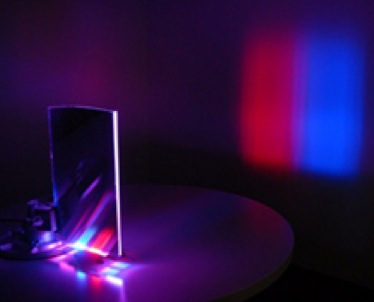Microsoft develops a prototype self-stereoscopic display
Microsoft Applied Sciencies Group has developed a prototype that allows you to view stereoscopic images without the need for special glasses. The new system would combine a series of narrower crystals at the base than on the cusp that would show successively two images to the viewer who would be followed in his movements by a mini-camera.
 Microsoft Applied Sciencies Group has developed a prototype that allows you to view stereoscopic images without the need for special glasses. The new system would combine a series of narrower crystals at the base than on the cusp that would show successively two images to the viewer, whose position a mini-camera would follow, giving you a sense of three-dimensionality. Although this technique has previously been developed by other manufacturers, the problem lay that the viewer could only stand still at a single point. In the case of the Microsoft prototype, the mini-camera would allow you to continue to know the system where to direct the light. These new crystals are so thin, between 6 and 11 Mm, that could even be incorporated into conventional liquid crystal displays.
Microsoft Applied Sciencies Group has developed a prototype that allows you to view stereoscopic images without the need for special glasses. The new system would combine a series of narrower crystals at the base than on the cusp that would show successively two images to the viewer, whose position a mini-camera would follow, giving you a sense of three-dimensionality. Although this technique has previously been developed by other manufacturers, the problem lay that the viewer could only stand still at a single point. In the case of the Microsoft prototype, the mini-camera would allow you to continue to know the system where to direct the light. These new crystals are so thin, between 6 and 11 Mm, that could even be incorporated into conventional liquid crystal displays.
You liked this article?
Subscribe to our RSS feed And you won't miss anything.
• section: Uncategorized














